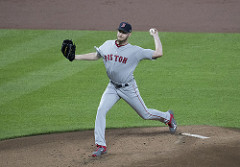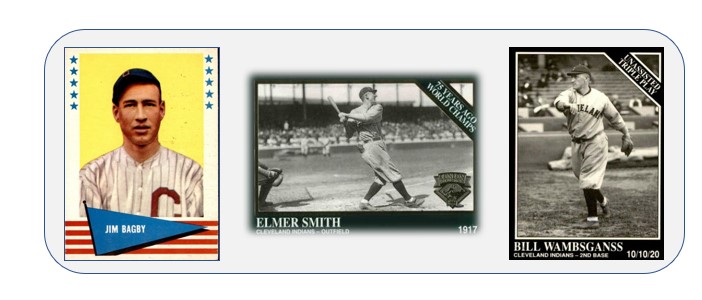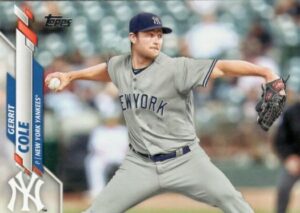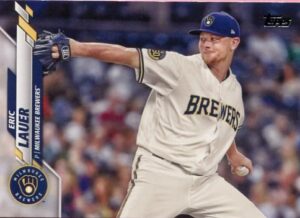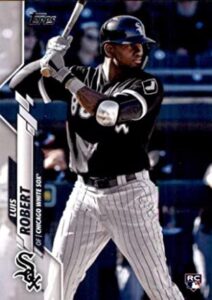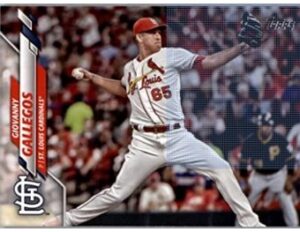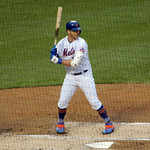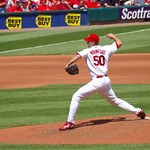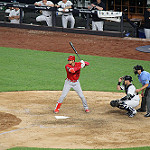 As regular Baseball Roundtable readers know, Baseball Roundtable invites and encourages guest contributions to its “Why I Love Baseball” page. Today, BBRT is pleased to present a guest post from Leonard I. Eckhaus, an award-winning author and poet, two-time Grammy Award nominee and, of course, lifelong fan of the national pastime. Eckhaus shares his love of the game in the form of a poem. You’ll find a full biography of Eckhaus and a Baseball Roundtable Q&A with him (exploring his passion for and opinions on the game) after the poem. Note: If you are interested in previous guest posts on the topic, click the “Why I Love Baseball” hot link at the top of the page (top line).
As regular Baseball Roundtable readers know, Baseball Roundtable invites and encourages guest contributions to its “Why I Love Baseball” page. Today, BBRT is pleased to present a guest post from Leonard I. Eckhaus, an award-winning author and poet, two-time Grammy Award nominee and, of course, lifelong fan of the national pastime. Eckhaus shares his love of the game in the form of a poem. You’ll find a full biography of Eckhaus and a Baseball Roundtable Q&A with him (exploring his passion for and opinions on the game) after the poem. Note: If you are interested in previous guest posts on the topic, click the “Why I Love Baseball” hot link at the top of the page (top line).
Why I Love Baseball
By Leonard I. Eckhaus
We’re down in the score,
It’s late in the innings,
What we need right now
Is a new beginning.
Then – a bunt, a sacrifice,
A stolen base,
Puts a runner at third,
Maybe it’s not too late.
A long fly to right,
The runner takes a lead.
Only ninety feet to home,
Hope he has enough speed.
A throw from the outfield,
A slide into the plate.
The umpire signals…
The runner is safe!
And now the score
Is three to three,
And I’m coming to bat –
It’s all up to me.
Once again the ballpark
Has come alive.
As the fans realize
We just may survive.
The scoreboard lights up,
The bulbs all aglow.
The fans rise from their seats,
Shouting “Go team, go!”
The organist begins to play
Stars and Stripes Forever,
The fans begin to scream and chant,
Their voices rise together.
Excitement building all around,
A cacophony… of color and sound.
And, above it all, you still can hear
The vendors’ voices loud and clear,
Shouting “Getch’ yer hot dogs,
Get yer beer.”
But I can’t listen,
I must concentrate now,
Not hear the noise,
Not hear the crowd.
So I stand real still
And wait for the pitch.
A fastball, a curve –
It doesn’t matter which.
The pitcher and I,
We’re on our own.
He’s winding up,
The pitch is thrown.
I see it coming,
I swing and connect.
The ball leaps from my bat
It’s better than I expect.
I look up just once
As I’m rounding first base,
Running fast as I can,
Just in case…
I hear the roar of the crowd
See them get to their feet.
As the ball soars out of the park,
And into the street.
And they shout out my name…
… And we win the game.
And then, amidst all the hullabaloo,
I know exactly what I have to do.
So, I tip me hat
And I bends me knee,
And the cheering explodes…
… And I know it’s for me.
True, it’s only a dream,
But that doesn’t matter,
Even though
I wasn’t really the batter.
In my dreams at least
I can hit a home run
Enjoy the thrills,
Enjoy the fun.
Anyone
Can play this game
And in their mind,
Have glory and fame.
You don’t have to be good,
You don’t have to be great,
You can just play to have fun –
To participate.
… And that’s why I love baseball!!

Photo by petestokke 
Leonard Eckhaus Bio
Leonard Eckhaus is the founder of AFCOM (1980), the leading association in the world for Data Center Managers; the co-founder of LL Music and a two-time Grammy nominee; and an award-winning author and poet.
In 2017, Eckhaus co-founded LL Music, a music production company and record label. He received two Grammy nominations in 2018 for his first album, Rendezvous, featuring the singer, Clint Holmes. A song he wrote for his wife Linda charted on UK Radio in its first week on the air and has received over 50,000 views on YouTube.
Eckhaus’ book, My Journey: (Lessons I’ve Learned Along the Way), the Memoirs of Leonard I. Eckhaus, has been selected by UK Talk Radio as one of the top 10 must-read books in 2021. His most recent book, If I Were a Pony, a poem about the relationship between a young lad and his pony, aimed at the grade school audience, has won ten awards including Creative Child Magazine’s 2021 Book of the Year.
Eckhaus established and presided over The Data Center Institute, a think tank of leading computer industry visionaries. He also created, produced and published DCM, an award-winning magazine. His insights into the growth and impact of Data Centers have appeared in such publications as The Wall Street Journal, The New York Times, the Washington Post, U.S. News & World Report, Bloomberg News and others.
Eckhaus has been married to his childhood sweetheart, Linda, for 59 years. They live in Nevada and have been involved in a number of local and state arts-focused organizations.
A Baseball Roundtable Interview with Leonard Eckhaus
Roundtable: What first drew you to the national pastime?
When I was seven- or eight- years-old, my friends and I used to play softball in an old nearby vacant lot. That’s also when every time I got hold of a nickel, I would buy a package of bubble gum that, in addition to the gum, contained five Topps baseball cards. Wish I still had them! A few years later, we switched from softball to baseball.
Roundtable: When did you attend your first baseball game and what was most memorable about it?
In 1951, my parents bought their first TV. It was a GE 16” combination TV, AM/FM radio and phonograph. When the technician that installed it turned it on, there was a New York Yankee game being played out right before my nine-year-old eyes. I couldn’t believe it! That was the first Major League game I had ever seen. Before that I had listened to them on the radio and had seen clips of baseball games on the newsreels they showed before the main feature started in movie theaters. About a year later, I was able to attend my very first in-person game. It was at the Polo Grounds, New York Giants vs. Cincinnati Reds. I still remember marveling at those huge arms of Ted Kluszewski.
Roundtable: Did you play baseball and, if so, at what levels?
I played in Little League and thought I was a pretty good hitter – until I was 14-years-old and made a team in some other league with players aged 14 to 16. The first time I saw a decent curve ball, I couldn’t stand in there and quickly realized it was time to retire and enjoy baseball from the stands.
Roundtable: What is your concept of the best baseball game? Indoors/outdoors? Day/Night? Slugfest/Pitchers’ duel or somewhere in the middle? Any other qualities you look for in a game?
Baseball today is not quite the same game as it was when I was growing up. The games I liked best were played during the afternoon. Pitchers all hoped to finish every game they started, regardless of the number of pitches they had thrown. I preferred pitchers’ duels and ‘little’ ball, which you hardly ever see today. The skill positions – catcher, shortstop, second baseman – often determined which team won. Bunting was an acquired and important skill. Moving the runner up was the hitter’s goal. A really good ballplayer consistently batted over .280 and had 20+ home runs, season after season.
I am not a fan of trying to “improve” the game by making it easier to hit home runs (lowering the pitcher’s mound) or having more runs scored by using ‘designated’ hitters. Guess I’m pretty much a traditionalist.
Roundtable: Do you have any favorite players or teams – past or present?
I was always a NY Yankee fan. My favorite players were Yogi Berra, Mickey Mantle, Phil Rizzuto, Hank Bauer, Whitey Ford and Eddie Lopat. But the single most exciting player I ever saw was Nolan Ryan when he played for the then California Angels and I had season tickets. Every time he got two strikes on a batter, the fans would rise to their feet and start cheering, hoping for the strikeout.
Roundtable: Since you are a data management guru, how do you feel about the data and analytics that have become such a big part of today’s game? Any specific types of data you feel are more or less useful?
When I was growing up, I had a good friend whose life ambition was to become a baseball statistician. When I went to games, I filled out a scorecard, brought it home and saved it. Batting averages, ERA’s, RBI’s, number of home runs … these were the only stats we fans really cared about.
Today’s ability to track everything from pitching speeds to how many times a batter strikes out on a fastball or on a curve, to designing the most effective gloves, take the fundamentals out of the game and replace them with statistics that often, in my opinion, should be left to the players’ intuition. The greatest managers gave their greatest players a lot of freedom to do their job as they saw best.
BASEBALL ROUNDTABLE ON THE TOP 100 BASEBALL BLOG LIST
 Baseball Roundtable is on the Feedspot list of the Top 100 Baseball Blogs. To see the full list, click here.
Baseball Roundtable is on the Feedspot list of the Top 100 Baseball Blogs. To see the full list, click here.
I tweet baseball @DavidBBRT
Follow/Like Baseball Roundtable’s Facebook Page here. More baseball commentary; blog post notifications; PRIZES.
Member: Society for American Baseball Research (SABR); The Baseball Reliquary; The Negro Leagues Baseball Museum.











